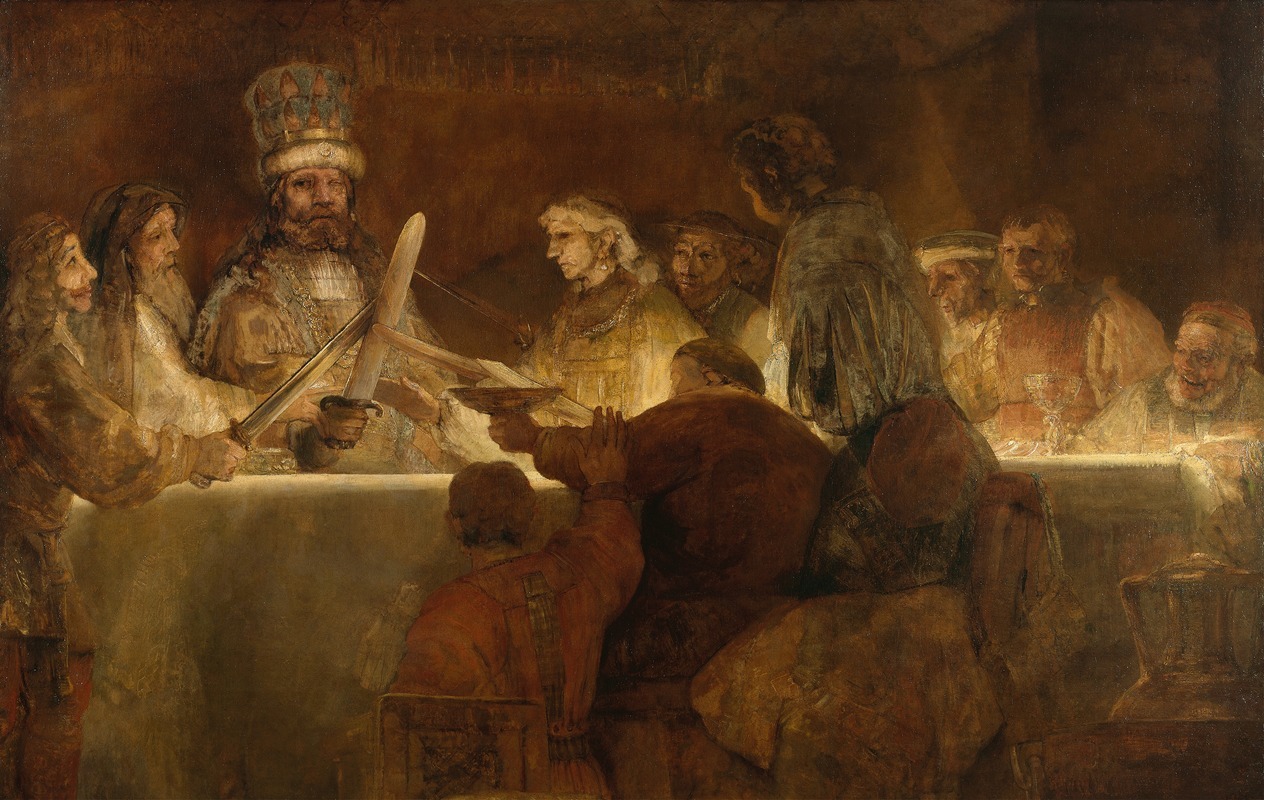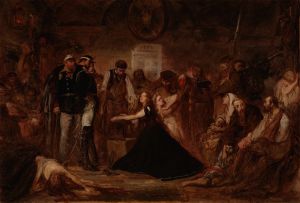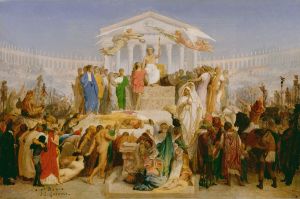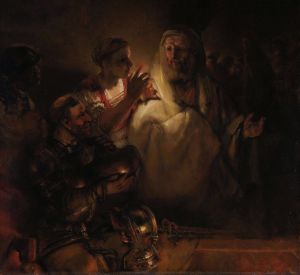
The Conspiracy of the Batavians under Claudius Civilis
A hand-painted replica of Rembrandt van Rijn’s masterpiece The Conspiracy of the Batavians under Claudius Civilis, meticulously crafted by professional artists to capture the true essence of the original. Each piece is created with museum-quality canvas and rare mineral pigments, carefully painted by experienced artists with delicate brushstrokes and rich, layered colors to perfectly recreate the texture of the original artwork. Unlike machine-printed reproductions, this hand-painted version brings the painting to life, infused with the artist’s emotions and skill in every stroke. Whether for personal collection or home decoration, it instantly elevates the artistic atmosphere of any space.
"The Conspiracy of the Batavians under Claudius Civilis" is a painting by the renowned Dutch artist Rembrandt van Rijn. This work is notable for its dramatic depiction of a historical event from the Batavian rebellion against the Roman Empire. The painting was originally commissioned for the new Town Hall in Amsterdam, which is now the Royal Palace on Dam Square.
The subject of the painting is drawn from the history of the Batavians, a Germanic tribe that inhabited parts of the modern Netherlands. The Batavian rebellion took place in the 1st century AD, led by the chieftain Claudius Civilis. The rebellion was a significant uprising against Roman rule, and it is documented by the Roman historian Tacitus. Rembrandt chose to illustrate a moment of conspiracy, where Civilis and his fellow leaders swear an oath to revolt against the Romans.
Rembrandt's painting is characterized by its dramatic use of light and shadow, a hallmark of his style. The central figure, Claudius Civilis, is depicted with one eye, a reference to his historical description as having lost an eye in battle. The scene is set in a dimly lit interior, with the figures gathered around a table, their faces illuminated by a mysterious light source. This use of chiaroscuro enhances the sense of intrigue and solemnity of the oath-taking moment.
Originally, the painting was much larger, but it was later cut down, and only a fragment of the original work survives today. The reasons for this alteration are not entirely clear, but it is believed that the painting was removed from the Town Hall because it did not meet the commissioners' expectations or fit the intended space. The surviving portion of the painting is housed in the Nationalmuseum in Stockholm, Sweden.
"The Conspiracy of the Batavians under Claudius Civilis" is significant not only for its historical subject matter but also for its place in Rembrandt's oeuvre. It represents one of his last major works and showcases his mature style, characterized by a bold and expressive use of paint. Despite its incomplete state, the painting remains a powerful testament to Rembrandt's ability to convey complex narratives and emotions through his art.
This work is also an example of Rembrandt's interest in historical and biblical themes, which he explored throughout his career. His ability to humanize historical figures and imbue them with psychological depth is evident in this painting, making it a compelling piece for both art historians and the general public. The painting's dramatic composition and the intense expressions of the figures continue to captivate viewers, highlighting Rembrandt's enduring legacy as one of the greatest painters of the Dutch Golden Age.






![Etude d’homme [Les Syndics], copie d’après Rembrandt](/imgs/236290/s/felix-ziem-etude-dhomme-les-syndics-copie-dapres-rembrandt-92a3ee19.jpg)











